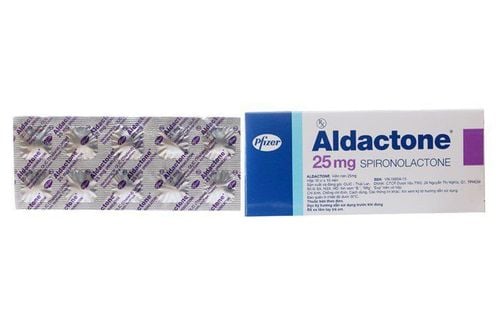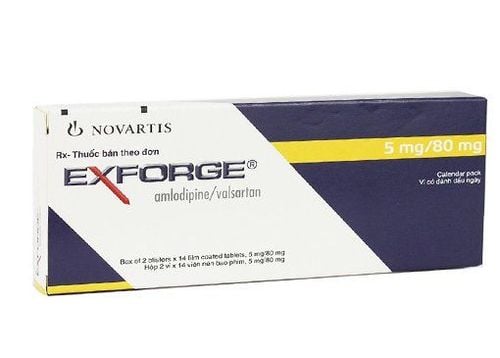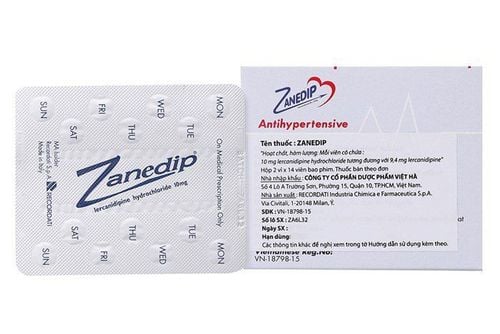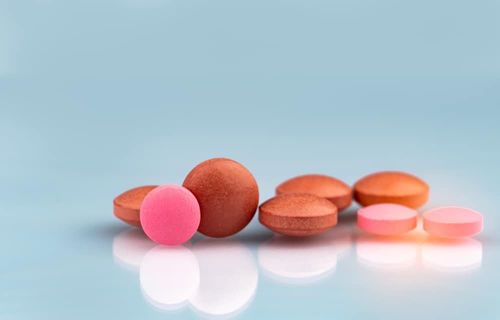This is an automatically translated article.
TV-Enalapril belongs to the group of cardiovascular drugs, with the main ingredient being Enalapril maleate. The following is information about the uses, dosage and precautions when using TV-Enalapril medicine.
1. What are the uses of TV-Enalapril?
TV-Enalapril is indicated for use in the following cases:
Treatment of idiopathic hypertension; Hypertension due to kidney disease; Hypertension with diabetes ; Degrees of heart failure such as improved survival, slowed progression of heart failure, reduced number of myocardial infarctions; Treatment and prevention of congestive heart failure; Effective in preventing ventricular dilatation after myocardial infarction. The drug TV-Enalapril is not allowed to be used in people who are hypersensitive to Enalapril, who have aortic stenosis and renal artery stenosis.
2. Dosage and how to use TV-Enalapril
2.1. Dosage Drug TV-Enalapril is taken into the body through oral route.
For the treatment of primary hypertension:
The starting dose is 5mg, the subsequent doses can be increased according to the degree of hypertension, the maintenance dose is determined after 2-4 weeks of treatment; The daily dose is from about 10-40mg, taking the drug once a day or divided into 2 times; The maximum allowed dose is 40mg/day. Patients using TV-Enalapril should be started at a low dose, because it can cause symptoms of hypotension, not at the same time as diuretics. Treatment in patients with renal failure:
Patients with creatinine clearance about 30-80ml/min, dose range 5-10mg/day; In patients with creatinine clearance about 10-30ml/min, the dose ranged from 2.5-5mg/day. Treatment of patients with heart failure:
For this group of patients, when treatment is often combined with digitalis and diuretics, it is recommended to reduce the diuretic dose and take the drug at intervals before using Enalapril.
The starting dose is 2.5mg, subsequent doses can be gradually increased to the therapeutic dose, however, this must be done under the careful supervision of a doctor; Enalapril is not meal dependent, so it can be taken before or after a meal. Food does not alter the bioavailability of the drug. Dosage is 1-2 doses/day.
3. Notes when using TV-Enalapril
3.1. Side effects Effects on blood and lymphatic systems: Anemia, aplastic anemia and hemolytic anemia, neutropenia, hemoglobin reduction, haematocrit reduction, thrombocytopenia,... Effects on metabolism metabolism and nutrition in the body: Hypoglycemia; Effects on the nervous and mental system: Headache, depression, confusion, somnolence, insomnia, irritability, paresthesia, dizziness, abnormal dreams, sleep disturbances;... Effects to the cardiovascular system: Feeling dizzy, low blood pressure (including postural hypotension), fainting, myocardial infarction,... Effects on the respiratory system: Cough, shortness of breath, runny nose , swollen throat, hoarseness, bronchospasm/asthma, pulmonary infiltrates,... Effects on the digestive system: Nausea or vomiting, diarrhea, abdominal pain, altered taste, intestinal obstruction, pancreatitis, indigestion, difficult defecation, loss of taste, stomach irritation... Effects on hepatobiliary: Liver failure, hepatitis, cholestasis (including jaundice); Patients in the course of treatment with TV-Enalapril encounter any unusual health signs, they should notify their doctor immediately for advice on appropriate solutions.
3.2. Caution In hypertensive patients treated with enalapril, if the patient is volume-depleted, symptomatic hypotension may occur; Enalapril should be used with caution in patients with left ventricular valve and pump closure. In case of cardiogenic shock and hemodynamic obstruction, avoid use; The starting dose should be adjusted according to the creatinine clearance of the patient with renal impairment and the patient's response to therapy should be closely monitored. Potassium and creatinine should be regularly monitored; In patients with bilateral renal artery stenosis or narrowing of the artery to a functioning kidney, the risk of hypotension and renal failure is increased; ACE inhibitors are rarely associated with a syndrome that begins with cholestatic jaundice and progresses to fulminant and ultimately fatal hepatic necrosis; In patients treated with ACE inhibitors who have experienced angioedema of the face, lips, tongue, glottis and/or pharynx; In patients receiving ACE inhibitors, anaphylaxis reactions during snake venom desensitization have been rare; In patients on high-velocity membrane dialysis, concomitant treatment with an ACE inhibitor has resulted in anaphylaxis; In diabetic patients treated with oral antidiabetic drugs or insulin injections, blood glucose levels should be closely controlled during the first month of ACE inhibitor therapy; While taking ACE inhibitors, a dry cough has been observed; In patients receiving ACE inhibitors, hypotension has been reported during surgery or anesthesia; In patients taking ACE inhibitors, hyperkalemia has been reported; Lithium and Enalapril should not be combined; The doctor must be informed if the patient is intolerant to certain sugars because Korantrec contains Lactose; Enalapril is not indicated during pregnancy; Enalapril may be excreted in human milk, but the effect of the drug on the infant has not been determined, so it should not be used while breastfeeding;
Please dial HOTLINE for more information or register for an appointment HERE. Download MyVinmec app to make appointments faster and to manage your bookings easily.













